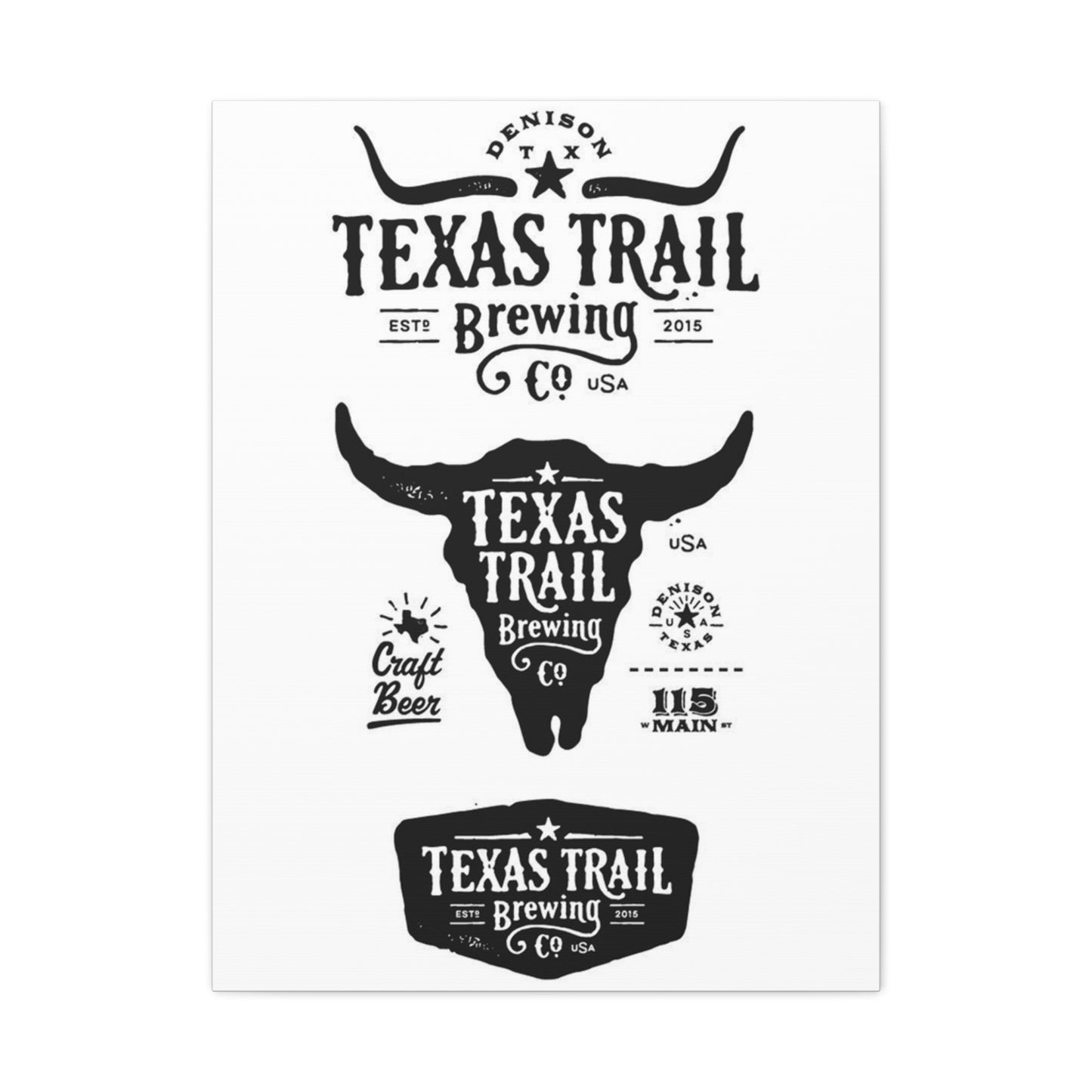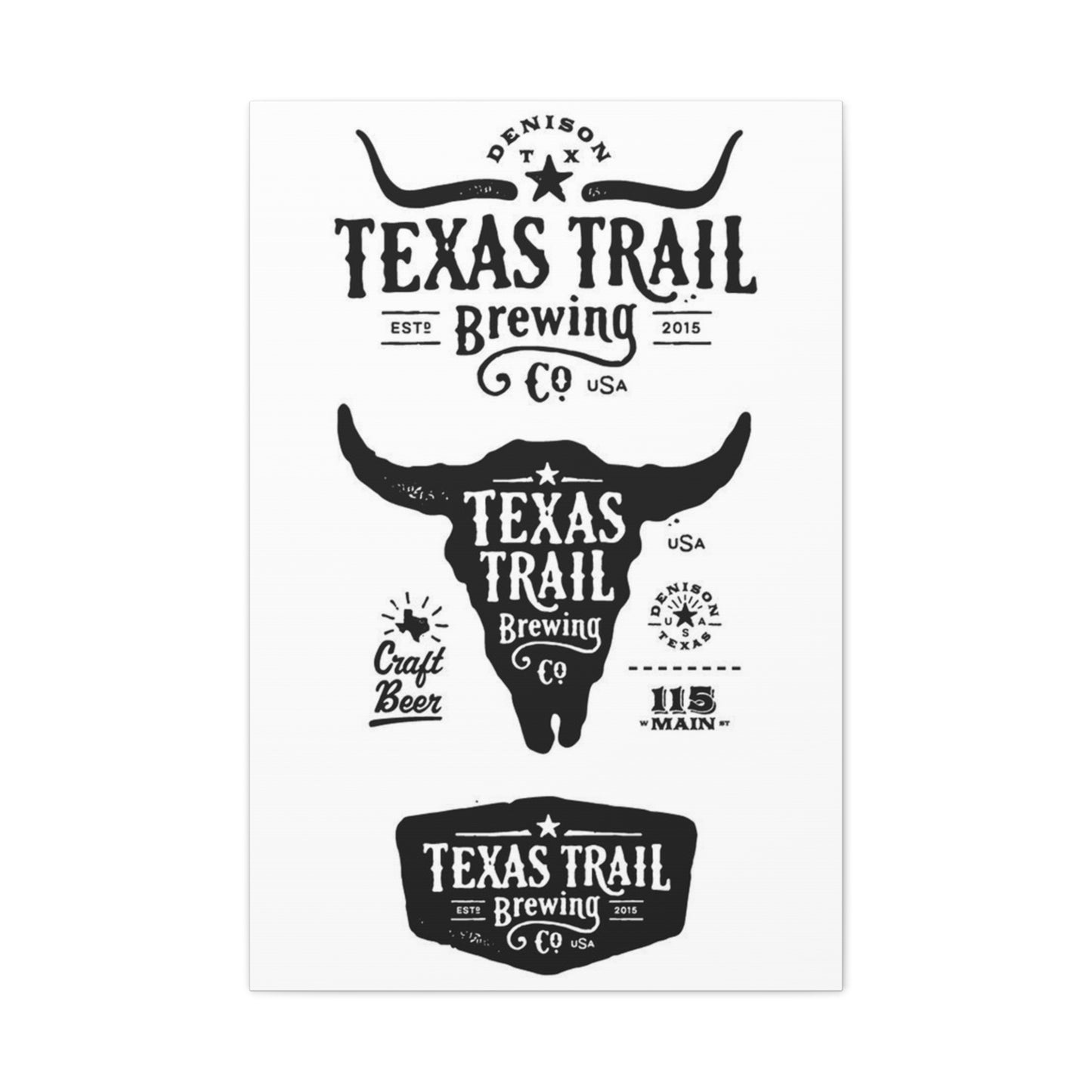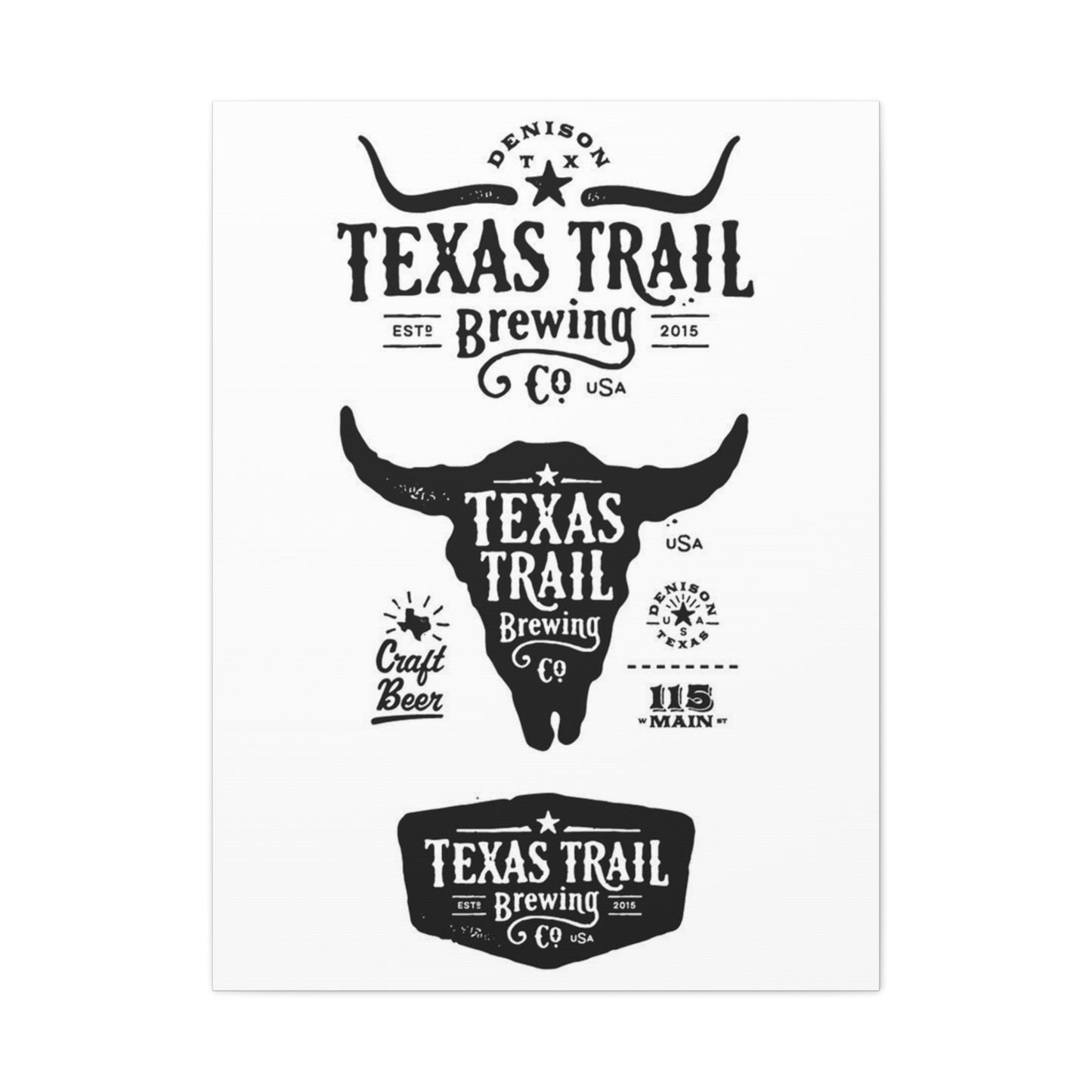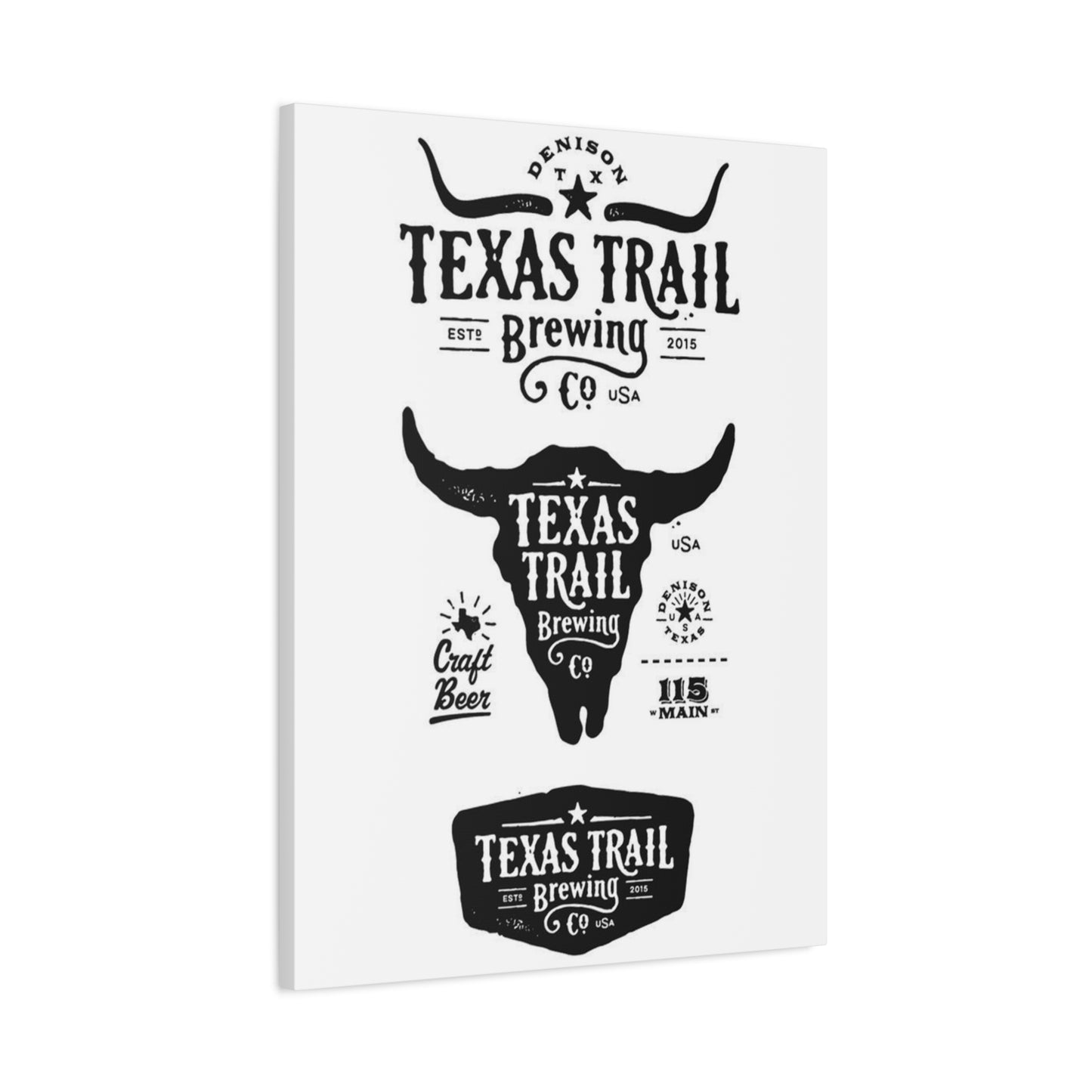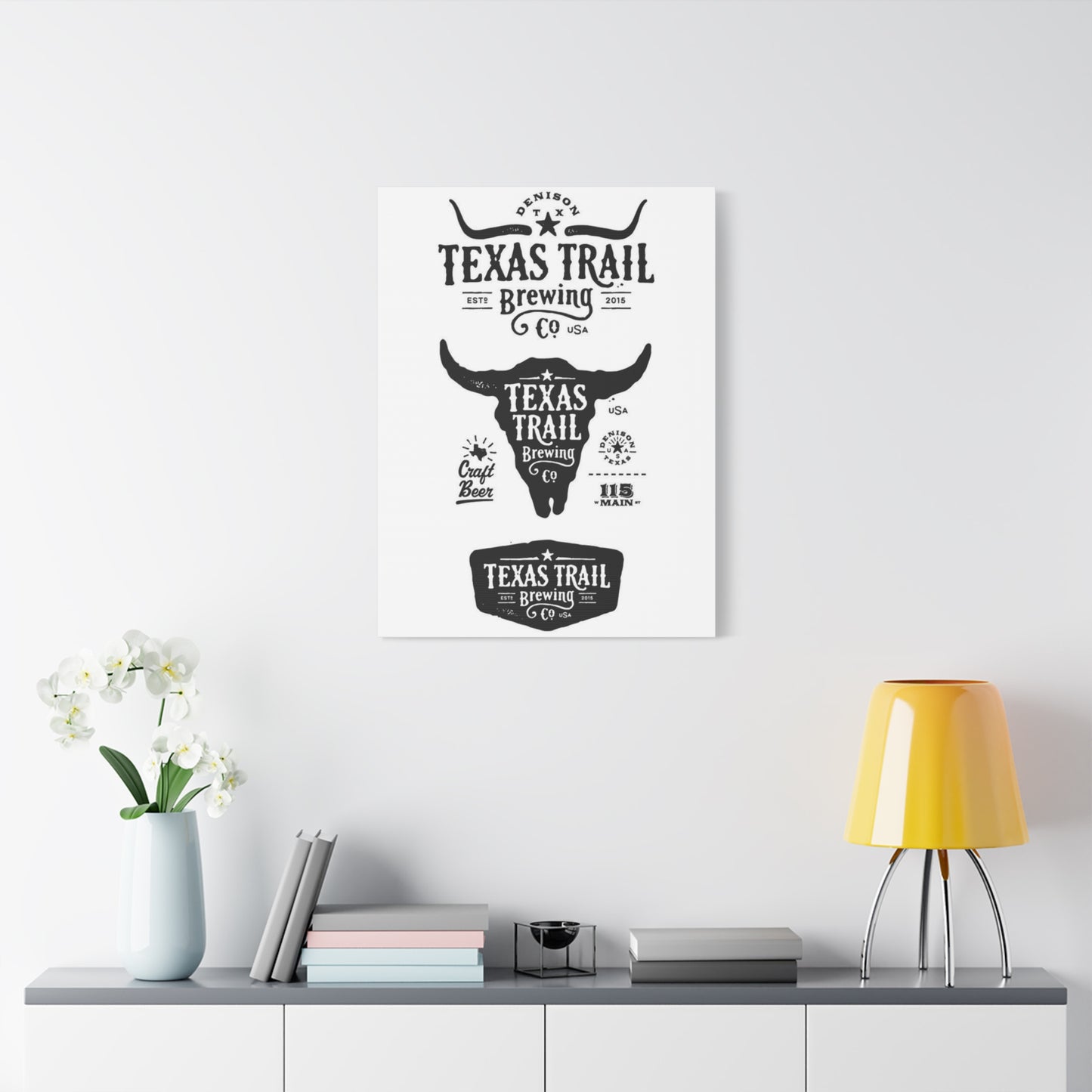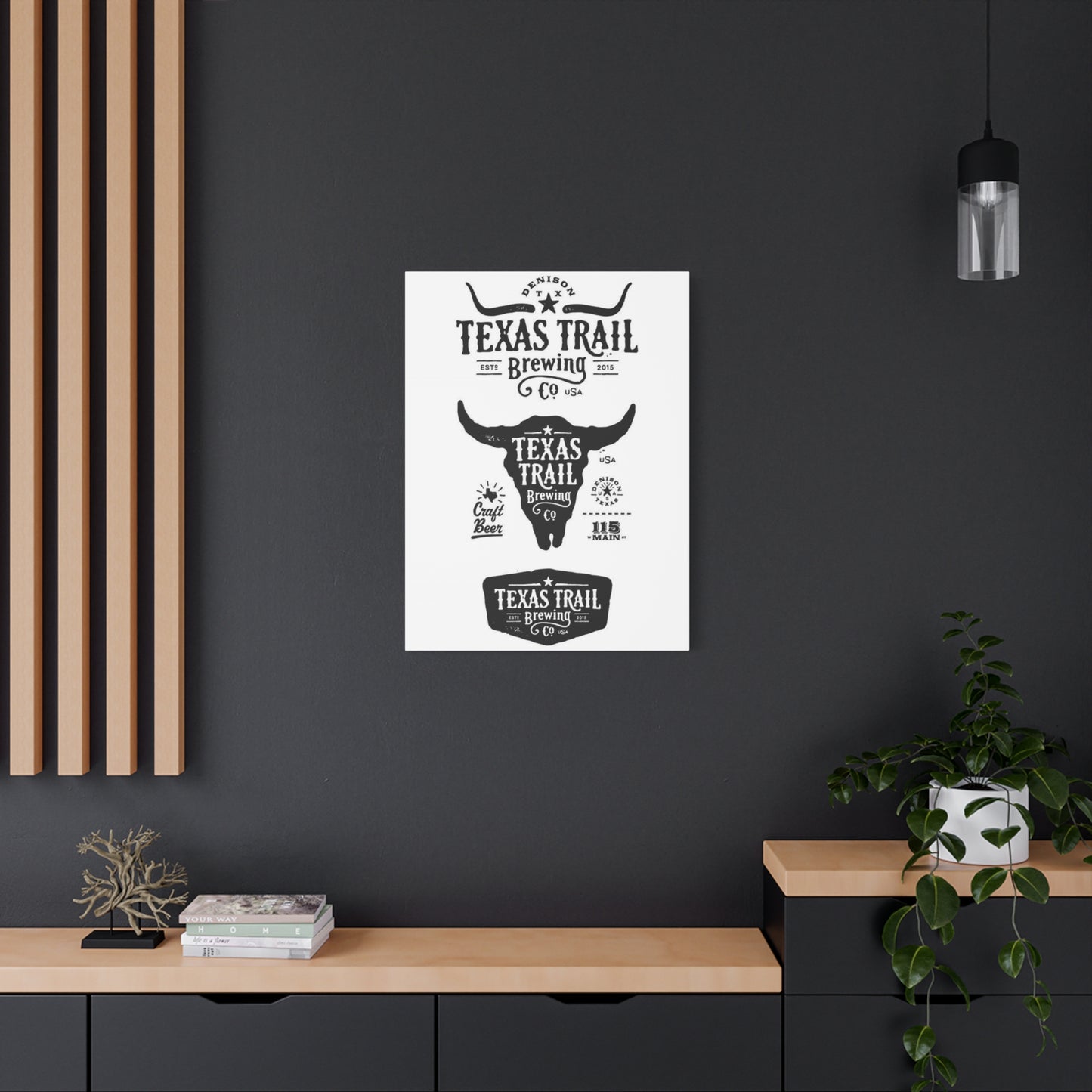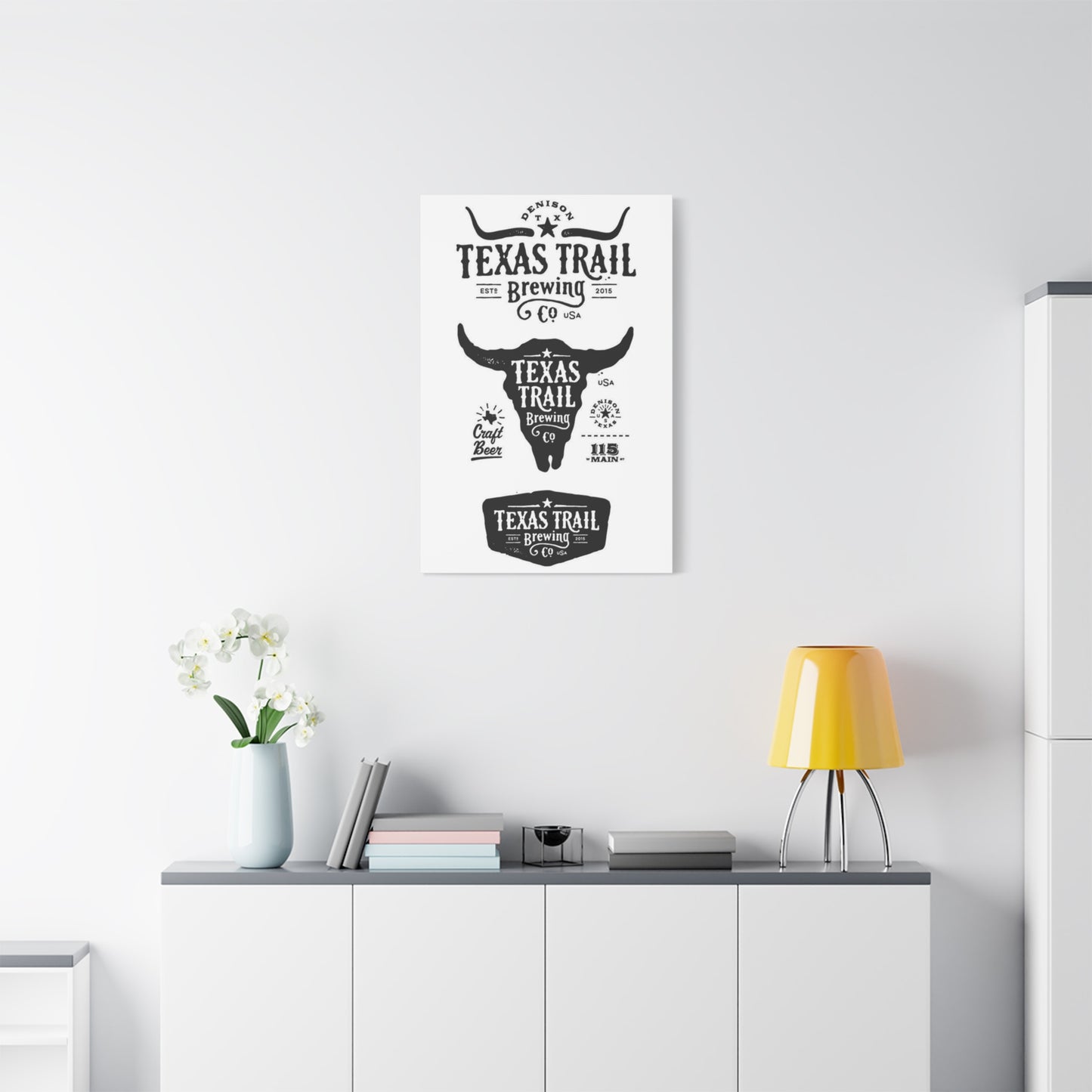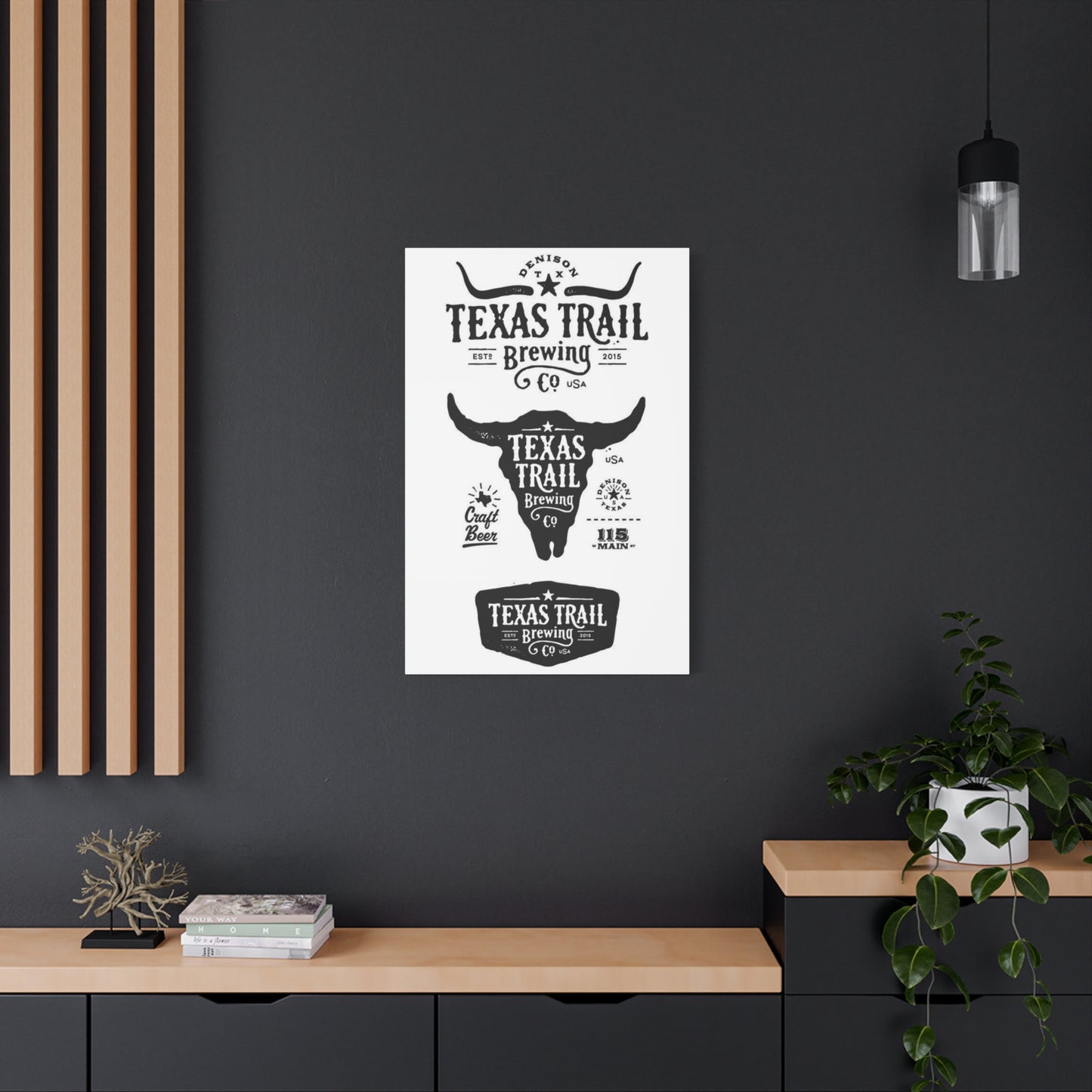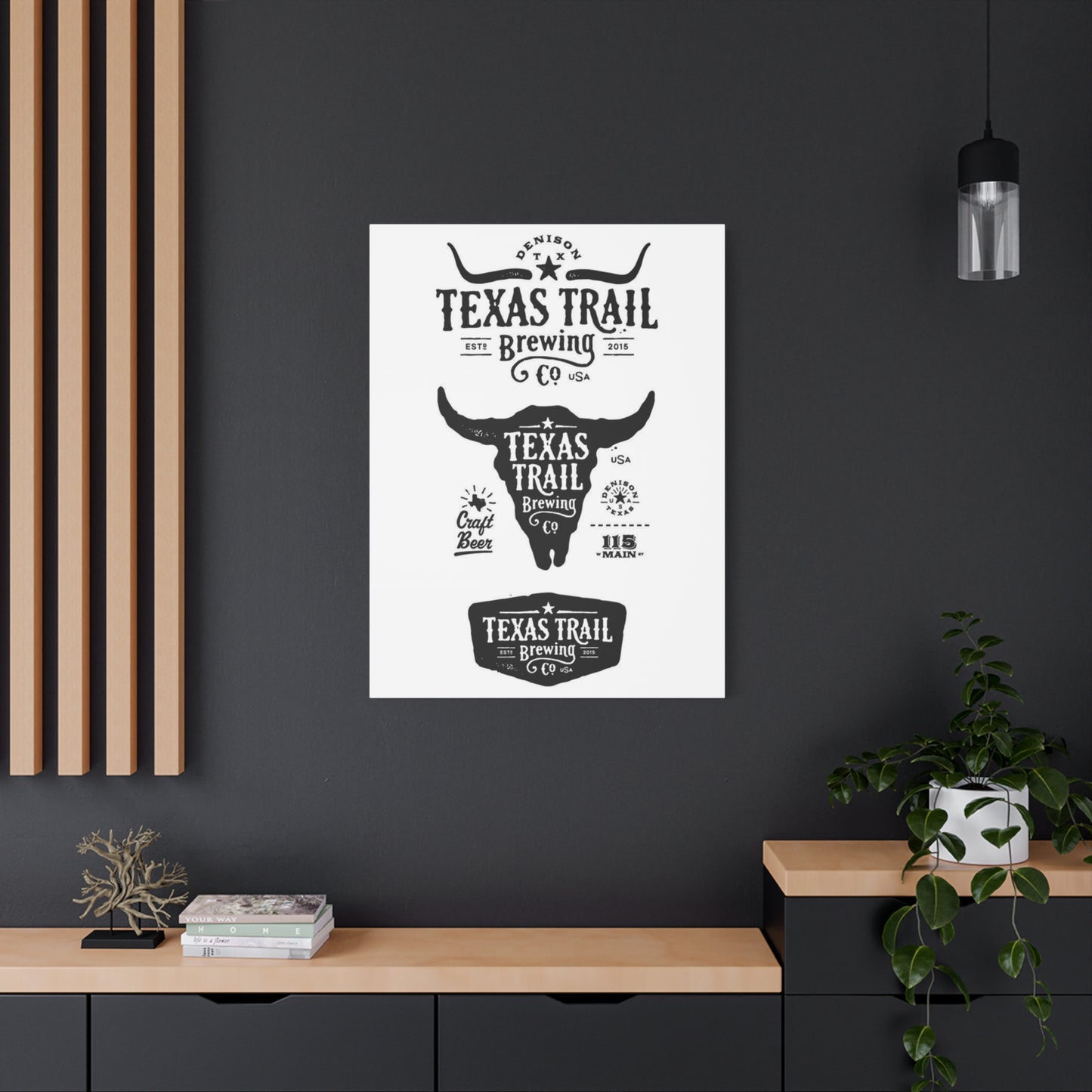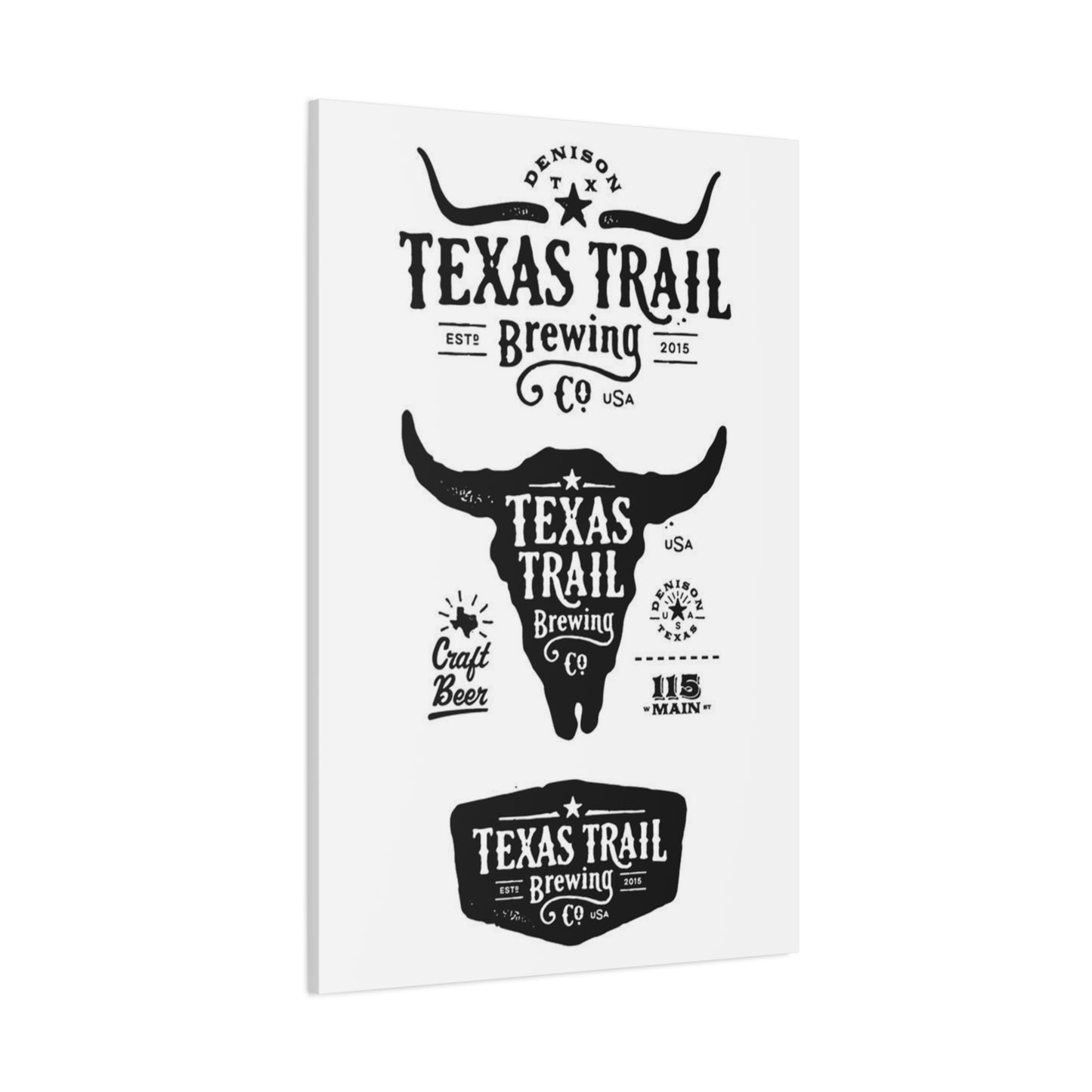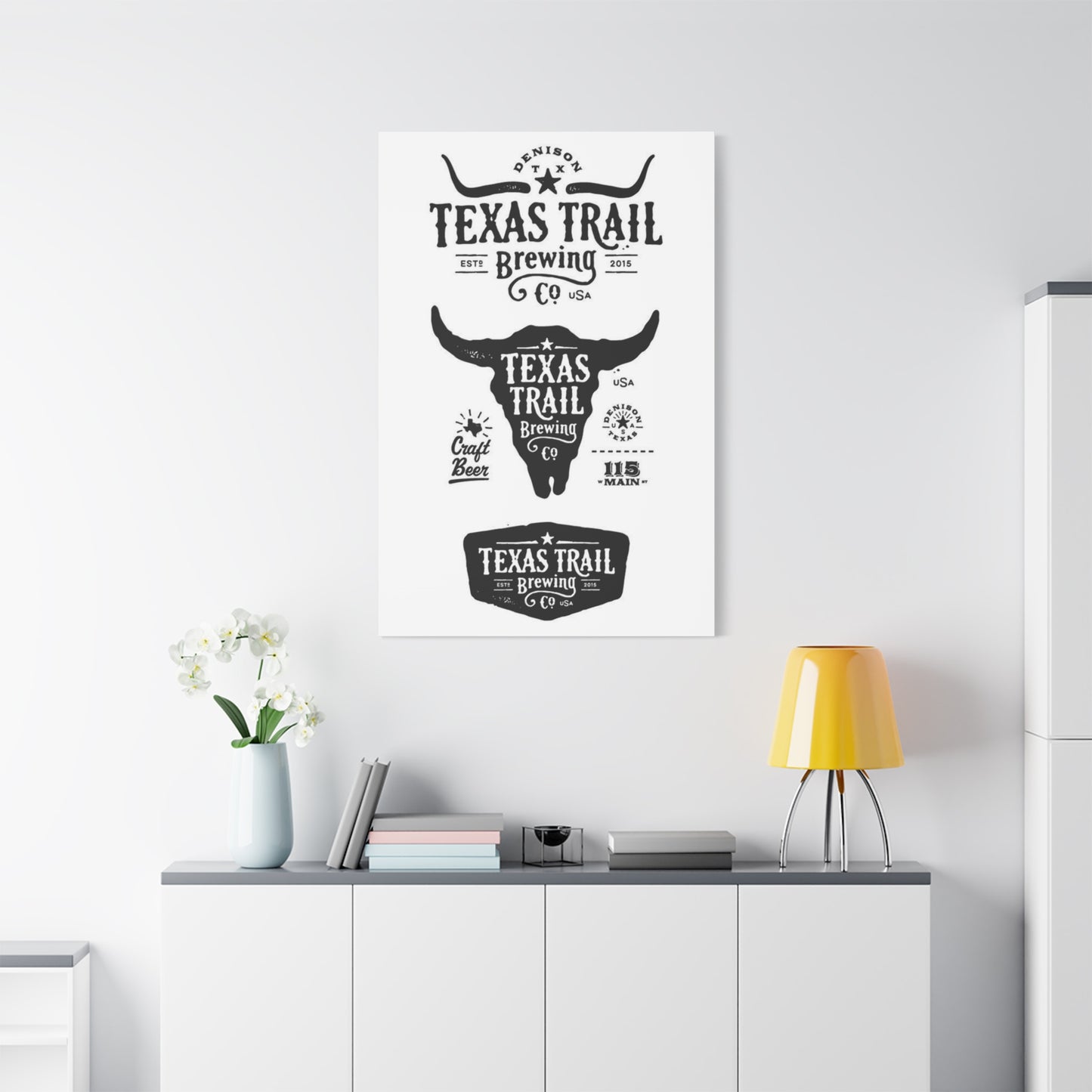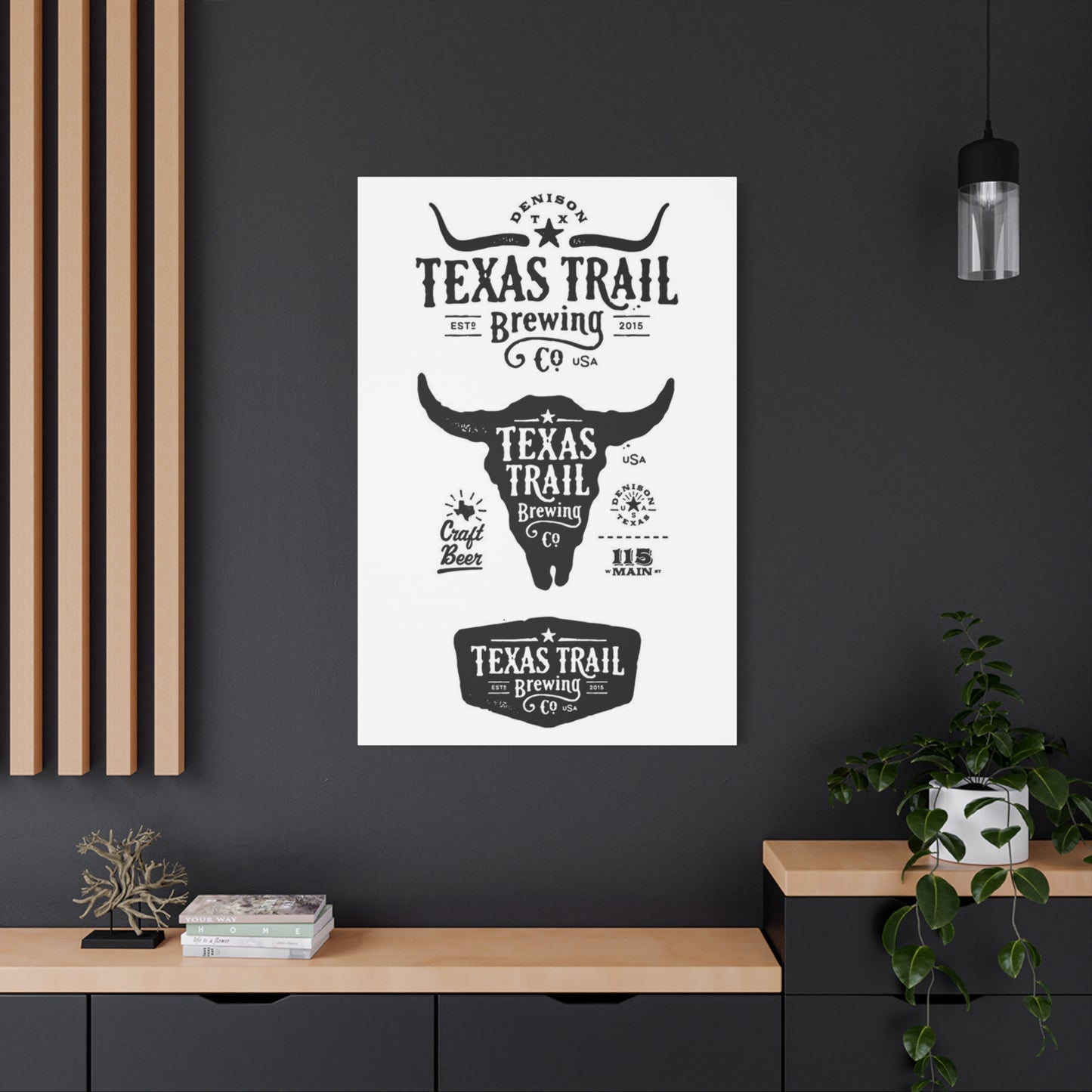Evoking the Lone Star Spirit: The Charm of Texas Trail Brewing Co. Poster Wall Art
In recent years, the world of interior design has warmly embraced niche aesthetics, moving away from generic, mass-produced decor and toward items that tell a story. One of the most potent and rapidly growing of these niches is the visual culture surrounding craft beer. This movement is about more than just enjoying a beverage; it's about appreciating the artistry, the local sourcing, the community, and the independent spirit that craft brewing represents. This appreciation has naturally spilled over into our living spaces. Homeowners, bar proprietors, and apartment dwellers alike are seeking ways to infuse their environments with this sense of authenticity and passion. This is where the appeal of brewery-themed wall art truly shines. It serves as a visual anchor, a conversation starter, and a testament to a lifestyle that values quality and craftsmanship.
Unlike a simple brand logo, this style of art taps into a deeper narrative, blending rustic charm with modern sensibilities. It’s a way to celebrate a hobby without being overt, to showcase a passion through sophisticated design rather than mere collection. This art becomes a bridge, connecting the rustic, industrial feel of a brewhouse with the comfort and personality of a home. It’s an acknowledgment that the things we enjoy are a core part of who we are, and that our walls should reflect that identity. The right piece of brewery art can transform a sterile space into a warm, inviting taproom, or add a touch of rugged elegance to a polished, contemporary room.
Defining the Texas Trail Brewing Co. Aesthetic
The specific concept of Texas Trail Brewing Co. poster wall art evokes a powerful and distinct visual identity. It is not just "beer art"; it is an aesthetic deeply rooted in a specific, romanticized narrative. This aesthetic is a masterful blend of several compelling themes: rugged frontierism, vintage Americana, and the artisanal nature of craft brewing. Imagine the imagery: the name "Texas Trail" itself conjures images of dusty cattle drives, westward expansion, and the unbridled spirit of the Lone Star State. The visual language follows suit. We see rich, earthy color palettes—think saddle brown, deep burgundy, sun-bleached beige, and the dark amber of a freshly poured lager. The typography is often bold and evocative, using distressed slab-serif fonts reminiscent of "WANTED" posters or old-timey saloon signs.
Iconography is central to this look, often featuring elements like the silhouette of a longhorn, a detailed rendering of a prickly pear cactus, a winding, dusty path, or perhaps the simple, sturdy outline of an old-fashioned brew kettle. The "Co." in the name implies heritage and history, a business built by hand, which resonates deeply with the craft beer movement's focus on small-batch, artisanal production. This aesthetic intentionally avoids the slick, minimalist polish of modern corporate branding. Instead, it embraces imperfection. You'll find faux-distressed textures, simulated paper-fading, and artwork that looks as if it has been weathered by the Texas sun. It is this combination that makes the Texas Trail Brewing Co. poster wall art so appealing; it feels like a genuine artifact, a piece of a story, a window into a fictional-yet-familiar past that celebrates grit, independence, and good beer.
Beyond the Brand: What "Texas Trail" Represents in Art
The power of Texas Trail Brewing Co. poster wall art lies precisely in the fact that it often represents a fictional or conceptual brand. This abstraction is a significant strength. When you hang a poster for a real, massive, international brewery, you are, in essence, displaying an advertisement. It ties you to that specific product, its corporate identity, and its market presence. A conceptual brand, however, is pure narrative. It is untethered from corporate realities, marketing strategies, or public controversies. It exists as an idea, a piece of storytelling captured in a single image. The "Texas Trail" becomes a symbol not of a particular pilsner or IPA, but of a feeling. It represents the spirit of the journey, the rugged individualism of the pioneer, and the deep-seated cultural identity of Texas.
It’s an homage to the ideals of the American West—self-reliance, adventure, and the rewards of hard work. In this context, the "brewing" element symbolizes craftsmanship, patience, and the alchemy of turning simple, raw ingredients into something complex and celebratory. The poster, therefore, is not just a poster for a brewery; it is a poster about an ethos. It allows the owner to align themselves with these concepts—heritage, craftsmanship, and a touch of wildness—without endorsing a specific product. This artistic freedom makes the piece incredibly versatile. It can be interpreted in deeply personal ways, resonating with anyone who values history, appreciates the craft process, or simply feels a connection to the sweeping, romantic landscapes of the American Southwest. It is art that sells an idea, not a beverage, making it a more timeless and sophisticated choice for home decor.
The Visual Elements of Rustic Brewery Posters
Rustic brewery posters, particularly those embodying the spirit of a name like Texas Trail Brewing Co., are built from a consistent and recognizable set of visual elements. These components work in harmony to create an immediate sense of nostalgia, warmth, and authenticity. Texture is perhaps the most fundamental element. The artwork is rarely flat or clean. Designers intentionally add layers of grime, light scratches, water stains, and a subtle paper-grain or canvas texture. This simulates age, giving the poster an immediate history, as if it were discovered in an old barn or peeled from the side of a forgotten saloon. Imagery is another cornerstone. The focus is on tactile and natural objects. Illustrations are often done in a hand-sketched, lithograph, or woodcut style, avoiding digital perfection.
You will frequently see sheaves of barley, clusters of hops, wooden beer barrels, and old-fashioned glass bottles. In the specific case of a Texas-themed piece, this is supplemented with regional iconography: a lone star, a cowboy boot, a rustic barn, or the outline of the state itself. The composition often feels balanced and grounded, mirroring the symmetrical, text-focused layout of turn-of-the-century advertisements. There is a "hand-made" quality to the entire piece. Even if digitally designed, the goal is to look analog. This aesthetic directly opposes the clean, vector-based graphics of contemporary design. It seeks to connect with the viewer on a tactile level, to make them feel the grit of the trail and the grain of the wood. It is this commitment to a pre-industrial, handcrafted feel that defines the rustic brewery poster and makes it such an enduringly popular style for creating a cozy and inviting atmosphere.
Typography as a Centerpiece in Vintage Beer Art
In the realm of vintage-style brewery art, typography is not merely functional; it is the main event. It transcends its role of conveying information and becomes a primary artistic element, often dominating the composition and setting the entire tone of the piece. For a design like a Texas Trail Brewing Co. poster, the choice of fonts is paramount. You will almost never see delicate, thin, or modern sans-serif fonts. Instead, the aesthetic leans heavily on bold, character-rich typefaces that ooze history and confidence. Slab serifs are a popular choice. These fonts, with their thick, block-like serifs, are inherently strong and grounded. They feel industrial and dependable, reminiscent of lettering stamped onto wooden crates or cast in iron. Another staple is the ornamental script, but not a fine, flowing calligraphy.
This is a more robust, heavily-swashed script, the kind you might see on an old whiskey bottle label or a 19th-century land deed. This script adds a touch of elegance and established quality. Finally, distressed and wood-type fonts are essential. These typefaces have imperfection built directly into their letterforms, with nicks, uneven weighting, and rough edges that simulate the look of old wooden blocks used in early printing presses. The arrangement of this text is just as important. Words are often set within ornate borders, arched across the top of the design, or contained within ribbon banners. There is a clear hierarchy, with the brand name—"Texas Trail"—rendered in the largest, most stylistic font, instantly capturing the eye. This focus on strong, declarative, and beautifully imperfect typography is what gives vintage beer art its authority and timeless appeal.
Color Palettes That Evoke the Texas Landscape
The color palette of Texas Trail Brewing Co. poster wall art is fundamental to its storytelling. The colors are not chosen for mere visual appeal; they are selected to transport the viewer to a specific place and time. The entire aesthetic is grounded in the earth, drawing its hues directly from the natural environment of the American Southwest. The dominant tones are warm, muted, and organic. You will find an abundance of deep, rich browns—from the dark, comforting shade of roasted barley or worn leather to the lighter, warmer tones of saddlewood and cedar. These browns provide a solid, rustic foundation for the entire piece. Complementing this is a range of reds and oranges. These are not bright, primary reds, but rather the deep, complex colors of Texas clay, the burnt orange of a canyon sunset, or the faded maroon of an old barn.
These hues inject warmth and passion into the design. To provide contrast and breathing room, designers employ shades of beige, cream, and tan. These represent the sun-bleached grasses of the prairie, the dust of the trail, and the aged parchment of an old map. They give the poster its vintage, time-worn quality. Finally, accents of deep forest green (representing hardy desert flora like cacti and juniper) or a faded, dusty sky blue are used sparingly to balance the warmth and add a touch of natural coolness. This deliberately restrained and earthy palette ensures the artwork feels authentic and grounded. It avoids any artificial or neon colors that would shatter the illusion, instead wrapping the viewer in a color story that is as vast, rugged, and inviting as the Texas landscape itself.
The Role of Iconography in Texas-Themed Decor
Iconography is the visual shorthand that instantly communicates a theme, and in Texas-themed decor, it is absolutely essential. For a piece of art like a Texas Trail Brewing Co. poster, the icons used are what firmly root the "brewery" concept in the "Texas" setting. Without them, it would just be generic rustic art. The most prominent and unmistakable icon is, of course, the Lone Star. This simple, five-pointed star is a powerful symbol of Texan independence, pride, and history. It can be used as a central element, a subtle background pattern, or a decorative flourish in the corners of the design. Another key set of icons is drawn from the state's unique fauna and flora.
The silhouette or detailed sketch of a longhorn steer is an immediate signifier of Texas's cattle-driving heritage. Similarly, the prickly pear cactus, with its distinctive pads and rugged nature, instantly evokes the arid, beautiful landscapes of the region. Geographical and cultural symbols also play a a huge part. The outline of the state of Texas itself is a common and powerful frame or central motif. Images related to the "trail" concept are also vital: a winding dirt path, a covered wagon wheel, or a rustic wooden signpost. These elements combine with the brewery-specific icons—like hops, barley, or barrels—to create a unique visual fusion. This marriage of symbols is what makes the art so effective. It doesn't just say "beer"; it says "beer with a Texan soul." It tells a story of a brew crafted with the same resilience and character as the state itself, making the poster a potent piece of regional storytelling.
How Texas Trail Brewing Co. Poster Wall Art Creates Atmosphere
A piece of wall art does more than just occupy space; it actively curates the atmosphere of a room. Texas Trail Brewing Co. poster wall art is particularly adept at this, as it projects a very specific and desirable mood. The primary atmosphere it creates is one of warmth, comfort, and conviviality. The earthy color palette, with its deep browns, reds, and creams, is inherently inviting. These colors lower the perceived temperature of a room, making it feel cozier and more intimate. It’s the visual equivalent of a warm fireplace or a comfortable leather armchair. This art also fosters an atmosphere of relaxation and sociability. Breweries and taprooms are, by nature, communal spaces designed for conversation and unwinding. Hanging a piece of art that evokes this setting subconsciously gives permission to guests (and the homeowner) to do the same.
It’s a visual cue to slow down, relax, and enjoy the company. Furthermore, it injects a sense of character and history. Even in a brand-new, sterile apartment, a vintage-style poster adds an immediate layer of perceived history and narrative. It makes the space feel lived-in, curated, and personal. It suggests that the owner is a person of substance, someone who appreciates craftsmanship and story. For a home bar, man cave, or den, the effect is even more pronounced. The poster acts as a thematic anchor, instantly establishing the room's purpose. It says, "This is a place for leisure, for enjoyment, for savoring the good things." It transforms a simple corner into a destination, a personal pub where the ambiance is just as important as the drink in hand.
Integrating Brewery Art into Your Man Cave or Bar
The home bar or "man cave" is the most natural and intuitive environment for a piece of Texas Trail Brewing Co. poster wall art. In this setting, the art isn't just decoration; it's a mission statement. It sets the theme and acts as the central focal point around which the rest of the room's decor can be built. To integrate it effectively, consider placement first. The poster should be hung in a place of prominence: directly behind the bar, over a comfortable sofa, or near a dartboard or pool table. It should be at eye level, where it can be easily seen and appreciated by guests. The key to successful integration is to let the poster inform the other design choices. Pull colors from the artwork to use in the room.
If the poster features a deep saddle brown, consider leather barstools or a brown accent wall. If it has touches of maroon, use that color for throw pillows or coasters. The materials in the room should also echo the poster's rustic aesthetic. This isn't the place for chrome and glass. Opt for natural wood shelving for your bottles, a bar top with a live edge, and industrial-style lighting with Edison bulbs. The art piece serves as the perfect complement to other bar-related paraphernalia, such as a collection of unique tap handles, a whiskey barrel, or a display of craft beer bottles. By building the room's theme around the Texas Trail poster, you create a cohesive, immersive, and deeply personal space that feels less like a spare room and more like an authentic, private saloon.
Using Poster Art in Modern Living Spaces
While the rustic nature of Texas Trail Brewing Co. poster wall art makes it a natural fit for a den or bar, its true design strength is revealed when it's placed in an unexpected context, such as a modern or minimalist living space. This juxtaposition creates a powerful visual dynamic. In a room dominated by clean lines, neutral colors (like grays, whites, and blacks), and smooth surfaces, the brewery poster acts as a vital point of warmth and texture. It becomes an immediate focal point, breaking up the polished monotony and injecting a necessary dose of soul and character. The key to making this work is deliberate contrast. Hang the art in a simple, high-quality black or dark wood frame. This cleanly delineates the "old" (the art) from the "new" (the modern decor), treating the poster like a true piece of gallery art.
Don't surround it with other rustic items; this would dilute its impact. Instead, let it stand alone. Place it on a clean white wall above a sleek, low-profile sofa or beside a minimalist metal floor lamp. This deliberate placement tells a sophisticated design story. It communicates that the homeowner is not just following a single trend but is thoughtfully curating a space that blends different eras and styles. The poster's earthy tones and distressed texture will prevent the modern room from feeling cold or sterile, while the modern room's clean setting will elevate the poster, highlighting its artistic merits, typography, and composition. It’s a bold choice that demonstrates confidence and a keen eye for design, proving that rustic art has a place far beyond the predictable man cave.
The Kitchen and Dining Room: A Home for Brewery Prints
The kitchen and dining room are spaces of creation, conviviality, and sensory enjoyment, making them an ideal, if sometimes overlooked, location for brewery-themed art. These areas are the heart of the home, where ingredients are transformed and people gather to share food and drink. A piece like a Texas Trail Brewing Co. poster taps directly into this spirit of craftsmanship and communal pleasure. In the kitchen, the art can add a welcome layer of warmth, especially in spaces dominated by cold, hard surfaces like stainless steel appliances and stone countertops. Hung on a pantry door or on a wall above a breakfast nook, the poster’s rich, earthy tones can make the kitchen feel more like a cozy European bistro or a rustic farmhouse.
It celebrates the artisanal side of food and drink, connecting the craft of brewing with the craft of cooking. In the dining room, the artwork serves as a fantastic conversation starter. It sets a relaxed and welcoming tone for dinner parties and family meals. Placed on a main wall, it can anchor the room's design, especially in homes with an open-plan living and dining area. It helps to visually define the dining space as a zone for relaxation and social gathering. The themes of "Texas Trail" also resonate here—harvest (barley), craftsmanship (brewing), and coming together at the end of a long journey. It’s a sophisticated alternative to more traditional dining room art, such as still-life paintings or landscapes, offering a touch of personality and modern rustic charm.
Office and Study: A Touch of Rustic Inspiration
Integrating a piece of Texas Trail Brewing Co. poster wall art into a home office or study introduces an unexpected and highly beneficial element to the space. Offices are typically environments of focus, logic, and professionalism, which can sometimes translate into a sterile or uninspired setting. The introduction of this rustic, narrative-driven art can profoundly shift the room's energy. It serves as a mental escape, a small window into a world of adventure, craftsmanship, and rugged independence. The "Texas Trail" theme, in particular, can be a subtle source of inspiration. It’s a metaphor for the long journey of a difficult project, the grit required to see a task through, and the reward at the end.
The "brewing" aspect champions patience, process, and the value of artisanal, hands-on work—all noble ideals in any professional pursuit. Placed on a wall behind a desk or in a reading corner, the poster adds character without being distracting. Its muted, earthy color palette is calming and grounding, which can help reduce stress and improve focus, unlike brighter or more abstract art. It humanizes the workspace, making it feel less corporate and more personal. It's a statement that, even in a place of work, the owner values story, heritage, and authenticity. This touch of rustic charm can make the home office a more pleasant and motivating place to be, balancing the digital and the mundane with a tangible reminder of a wider, more adventurous world.
The Rise of Fictional Brands in Interior Design
The popularity of art depicting fictional brands like "Texas Trail Brewing Co." is a fascinating and growing trend in interior design. This movement is a direct response to a world saturated with logos and overt advertising. We have become wary of turning our homes into billboards for multinational corporations. A fictional brand, however, offers the best of both worlds: it provides the recognizable, nostalgic aesthetic of vintage advertising without the commercial baggage. It’s a "safe" way to engage with brand culture. The appeal is rooted in storytelling. A fictional brand is a blank slate; the designer creates a compelling name and a beautiful visual identity, and the homeowner's imagination does the rest.
We instinctively fill in the blanks, imagining the gruff but kindly founder of the "Texas Trail Brewing Co.," the taste of its signature lager, and the small Texas town where it was supposedly brewed. This act of co-creation makes the art piece deeply personal. It’s not just something you buy; it's a piece of a world you are implicitly helping to build. This trend also speaks to a desire for authenticity, even if that authenticity is artfully constructed. These posters are designed to feel more real, more historic, and more genuine than the slick, focus-grouped branding of today. They tap into a nostalgia for a "simpler time" when businesses were local, products were made by hand, and a logo was a mark of pride, not a global asset. By hanging this art, the owner is making a statement about their values, favoring the idea of craftsmanship and heritage over actual brand loyalty.
Why We Connect with Imagined Histories
Humans are narrative-driven creatures. We understand the world not through isolated facts, but through the stories we tell about them. This is precisely why we form such strong connections with the imagined histories presented in art like the Texas Trail Brewing Co. poster. This piece isn't just a picture; it's a prompt for a story. The "imagined history" it suggests—a rugged brewery on the Texas frontier—taps into powerful cultural archetypes. We connect with it because it resonates with the foundational myths of the American West: pioneering spirit, self-sufficiency, and the taming of a wild landscape. This imagined past is often more appealing than the real one. It’s a sanitized, romanticized version of history, free of the complexities and hardships of the actual 19th-century frontier. It offers all the aesthetic charm—the rustic wood, the worn leather, the bold typography—without any of the associated struggle. It’s history as escapism.
Furthermore, this art allows us to feel a sense of belonging and heritage, even if it's not our own. By placing this poster in our home, we are, in a small way, adopting this narrative. We become patrons of this fictional brewery, participants in its story. This connection feels personal and authentic because it is self-chosen. It's a way of curating our own identity, of saying, "These are the stories and values that resonate with me." In a rapidly changing, often impersonal modern world, connecting with a stable, romantic, and beautifully designed "past" provides a sense of grounding and identity that is deeply comforting and psychologically satisfying.
The Nostalgic Pull of Vintage-Style Advertising Art
There is an undeniable nostalgic pull to vintage-style advertising art that transcends generations. Even for those who never lived in the eras these posters mimic, the aesthetic evokes a powerful sense of longing. This nostalgia is not necessarily for a specific time, but for a perceived quality of that time. We look at these old-style ads and see a world that appears simpler, more earnest, and more optimistic. The messaging is direct and confident, often celebrating the quality and craftsmanship of the product itself, rather than selling an abstract lifestyle or using celebrity endorsements. This perceived honesty is incredibly appealing. Furthermore, the artwork itself is a huge part of the draw.
Before the dominance of photography and minimalist digital design, advertising was a showcase for incredible illustration and typography. Artists and letterers were masters of their craft, creating lush, detailed, and beautifully composed images. A piece like the Texas Trail Brewing Co. poster is a direct homage to this lost art form. It celebrates a time when commercial art was still, fundamentally, art. This style also connects us to a sense of permanence. In an age of disposable digital ads that vanish in a fraction of a second, a poster that looks like it was printed on a press and designed to last for decades feels substantial and real. It represents a slower, more deliberate world. Hanging this art is a way to reclaim a piece of that deliberateness, to bring a sense of history and permanence into our own fast-paced lives.
Craftsmanship and Quality: Choosing Your Poster Print
When selecting a piece of Texas Trail Brewing Co. poster wall art, the craftsmanship and quality of the print itself are just as important as the design. A beautiful design rendered on flimsy paper with faded inks will ultimately be a disappointment. The physical quality of the print is what gives the artwork its presence, durability, and sense of value. First, consider the printing method. The best prints are often giclée (pronounced "zhee-clay") prints. This method uses high-quality, archival pigment-based inks on a high-resolution inkjet printer. The result is a print with stunning color accuracy, deep, rich blacks, and a level of detail that captures every nuance of the original design, including the subtle distressing and textures. These prints are also highly resistant to fading, ensuring your art will look just as good in twenty years as it does today.
The choice of paper is the next crucial factor. Look for heavyweight, acid-free, archival-quality paper. A matte or textured art paper is often the best choice for this rustic style, as a glossy finish would look too modern and create glare. A good, thick paper stock gives the poster a substantial feel and ensures it will hang flat, whether in a frame or mounted directly. For a more elevated look, a print on canvas is an excellent option. This immediately gives the piece a "painted" feel, eliminating the need for glass in a frame and adding a rich, tactile surface to the artwork. Regardless of the medium, investing in a high-quality print is an investment in the art itself. It respects the artist's design and ensures the piece will be a lasting and impactful part of your home decor.
Canvas vs. Paper: Selecting the Right Medium for Your Art
The choice between a canvas print and a traditional paper poster significantly alters the final look and feel of your Texas Trail Brewing Co. poster wall art. Neither is definitively "better"; they simply serve different aesthetic purposes. A paper print, especially on high-quality, heavyweight matte or textured stock, offers a classic, authentic poster feel. This is the traditional medium for advertisements and prints, and it carries a sense of nostalgic accuracy. When placed behind glass in a frame, a paper print has a sharp, defined, and protected look. The glass adds a layer of formality and reflectivity, making it feel like a curated piece in a gallery. This option is often more affordable and offers immense versatility in framing, allowing you to easily match the frame's style (from rustic barnwood to a sleek black modern frame) to your room's decor.
A canvas print, on the other hand, immediately elevates the art, giving it a more substantial, painterly quality. The "poster" becomes "fine art." Canvas prints are typically gallery-wrapped, meaning the image extends around the edges of a sturdy wooden internal frame. This allows the piece to be hung without any external frame at all, offering a clean, modern, and dimensional look. The natural texture of the canvas itself interacts with the artwork, adding depth and softening the lines, which can enhance the vintage, distressed feel of the design. A canvas print feels more permanent and substantial, like a piece of original art. The choice depends on your goal: for an authentic, crisp, and versatile "print" feel, paper is perfect. For a more dimensional, frame-free, and high-end "art" feel, canvas is the superior option.
The Importance of Framing in Wall Art Presentation
A frame is to a piece of art what a great tap is to a great beer: it’s the presentation system that delivers the product in its best possible form. The right frame for your Texas Trail Brewing Co. poster wall art can dramatically enhance its impact, while the wrong one can undermine its entire aesthetic. The frame serves several crucial functions. First, it protects the print from dust, humidity, and damage. For a paper print, a frame with UV-protective glass or acrylic is essential to prevent the inks from fading over time. Second, it provides structure, ensuring the poster hangs flat and doesn't warp or curl. But most importantly, the frame is a key part of the design itself. It creates a "visual pause" between the artwork and the wall, drawing the viewer's eye inward. For a rustic poster, the frame choice is critical.
A reclaimed barnwood frame is a popular and effective choice. The weathered, rough-hewn texture of the wood directly complements the distressed, vintage look of the art, creating a cohesive and powerfully rustic statement. A simple, flat, wide-plank-style frame in a dark walnut or black finish is another excellent option. This provides a strong, grounded border that doesn't compete with the art but gives it a sense of weight and importance. Conversely, placing this rustic art in a very simple, thin, modern black metal frame can create a striking "modern farmhouse" contrast, as discussed earlier. The key is to ensure the frame's style is a deliberate choice that either complements the art's theme or provides an intentional, stylish contrast.
DIY Mounting Ideas for a More Personal Touch
While framing is the classic approach, a piece like a Texas Trail Brewing Co. poster, with its rugged and informal aesthetic, lends itself beautifully to more creative and personal do-it-yourself mounting methods. These options can be more budget-friendly and add an extra layer of handcrafted charm. One popular method is to use poster rails or hangers. These typically consist of two pairs of wooden bars (one for the top, one for the bottom) that either clamp onto the print with magnets or are screwed together. The top bar has a string (often leather or twine) for hanging.
This gives the poster a casual, vintage "schoolhouse map" or "botanical chart" vibe that fits the theme perfectly. Another simple and effective idea is to mount the poster directly onto a stained piece of plywood or a reclaimed board. You can use a thin layer of spray adhesive or decoupage glue to affix the print to the wood, then gently sand the edges to blend the paper into the board. This makes the poster feel like it was painted or printed directly on the wood, enhancing its rustic quality. For a more industrial-raw look, you can simply use four bulldog clips or other large, vintage-style metal clips. Nail the clips to the wall in the four corners and clamp the poster in place. This is a non-permanent, minimalist solution that gives the art an "in-progress" or "workshop" feel, fitting for the "craft" theme. These DIY methods bypass the formality of a traditional frame and lean into the art's story of craftsmanship and authenticity.
The Intersection of Craft Beer Enthusiasm and Art Collection
The line between being a hobbyist and being a collector is often blurry, and in the world of craft beer, it has all but vanished. The modern craft beer enthusiast is frequently a collector by nature—they collect rare bottles, unique glasses, and experiences (like visiting breweries). It is only natural that this passion extends to art collection. Texas Trail Brewing Co. poster wall art sits at the perfect intersection of these two worlds. For the beer lover, this art is a sophisticated way to showcase their passion. It's a step above taping coasters to a fridge or stacking empty bottles on a shelf. It demonstrates an appreciation for the culture of craft beer, not just its consumption.
The poster becomes a badge of identity, signaling to visitors that this is a home where craftsmanship, flavor, and small-batch quality are valued. For the art collector, especially one interested in Americana, folk art, or graphic design, these posters are appealing in their own right. They are prime examples of a contemporary design movement that pulls heavily from 1/th- and early 20th-century advertising. They are studied in their use of typography, color theory, and composition. A fictional-brand poster like this one is, in many ways, "pure" design—it's not trying to sell a product, but rather to perfectly execute a specific aesthetic. Therefore, this art serves two masters: it satisfies the beer enthusiast's desire to celebrate their hobby and the art lover's desire for a visually compelling and well-crafted design.
Gifting Texas Trail Brewing Co. Poster Wall Art
Finding the right gift, especially for someone with a specific hobby like craft beer, can be challenging. Gifting the beverage itself can be tricky—palates are personal, and they may have already tried what you've picked. This is where Texas Trail Brewing Co. poster wall art emerges as an almost perfect gift. It is thoughtful, personal, and has a lasting value that a six-pack does not. It’s an ideal present for a variety of recipients. For the friend with a new home or apartment, it's a fantastic housewarming gift that instantly adds personality and warmth to their walls. For the homebrewer, it’s a tribute to their own passion for the craft, a piece of art that can hang proudly in the space where they create their own brews.
It’s also a "can't-miss" gift for anyone outfitting a home bar, game room, or outdoor patio area. The art is specific enough to show you've paid attention to their interests (craft beer, rustic decor, Texas themes) but general enough that it doesn't clash with their loyalty to a specific local brewery. Because the brand is conceptual, you don't risk gifting them art for a brewery they don't particularly like. Instead, you are giving them a piece of art that celebrates the spirit of the hobby itself. When paired with a simple, quality frame, it becomes a complete, high-value gift that feels far more personal and permanent than a bottle of beer or a generic gift card.
Curating a Gallery Wall with Brewery Themes
A gallery wall is a collection of images, art, and objects that are grouped together to create a single, cohesive statement. A brewery-themed gallery wall can be a stunning focal point in a dining room, hallway, or living area, and a piece like the Texas Trail Brewing Co. poster is the perfect anchor for such a collection. To build the wall, start with your main piece—the Texas Trail poster—and place it slightly off-center. This will be the largest and most dominant piece. From there, build outward with smaller, complementary items. The key is to create variety in both size and medium. You could pair the large poster with a smaller, framed print of a patent diagram for a beer tap or a scientific illustration of the hop plant.
You could also include more dimensional objects. A rustic, laser-cut wooden sign with a beer-related quote, a vintage metal "BREWERY" sign, or even a mounted, ornate bottle opener can add texture and break up the flatness of the framed prints. Vary the frames as well. While you can use all matching black frames for a very orderly look, a more eclectic and rustic feel can be achieved by mixing frame styles—a barnwood frame here, a simple black frame there, and perhaps a small, ornate vintage-style metal frame. The unifying element is the theme (craft beer, rustic, Texas) and a consistent color palette. By pulling the browns, reds, and creams from the main poster, you can ensure that even a disparate collection of items feels intentional and beautifully curated.
The Lasting Appeal of Western and Frontier Motifs
The Western, or frontier, motif is one of the most enduring and powerful aesthetics in American culture. Its appeal is timeless and stretches far beyond the borders of Texas or the American West. A piece like the Texas Trail Brewing Co. poster wall art taps directly into this deep cultural vein. The reason for its lasting appeal is that it symbolizes a set of core values that many people find deeply aspirational: independence, self-reliance, resilience, and a direct connection to the land. The "trail" is a potent metaphor for life itself—a journey filled with challenges, discovery, and the promise of a destination. The "frontier" represents possibility, a blank slate where one can build a life from scratch. In our modern, highly-regulated, and digital world, this fantasy of rugged, analog freedom is more appealing than ever. It’s a form of escapism.
The aesthetic itself is also inherently appealing. It is based on natural materials—wood, leather, stone, and cotton. It is tactile, warm, and grounded. It shuns the artificial and the disposable. This connection to the "real" and the "raw" feels comforting and stable. The Western motif, as seen in this brewery art, is not just a "cowboy" theme. It has evolved to become a sophisticated "rustic modern" or "desert boho" style. It’s about capturing the spirit of the frontier—the earthy colors, the natural textures, the handcrafted quality—and integrating it into our contemporary homes. This art is a small, accessible way for anyone to bring a piece of that powerful, mythic American story into their personal space.
Final Pour:
The exploration of Texas Trail Brewing Co. poster wall art reveals a truth that extends far beyond a single product. It demonstrates that the most effective decor is not just visually pleasing, but is also rich with narrative, symbolism, and cultural resonance. This specific style of art—a conceptual, vintage-inspired design rooted in the powerful mythos of both Texas and craft brewing—serves as a perfect case study in how we use our homes to tell stories about who we are and what we value. This art is successful because it operates on multiple levels simultaneously. For the craft beer enthusiast, it is a sophisticated celebration of a beloved hobby, elevating it from mere consumption to a matter of cultural identity. It champions the values of the craft movement: patience, quality, localism, and the artisan's hand. For the lover of rustic and farmhouse aesthetics, it is a potent thematic anchor, injecting warmth, texture, and a sense of history into a space.
Its earthy palette and distressed visuals provide a grounding counterpoint to the clean, and sometimes cold, lines of modern design. And for the storyteller in all of us, it is a piece of an imagined history. The fictional "Texas Trail" brand is a blank canvas, allowing us to project our own ideals of adventure, independence, and heritage onto its beautifully designed surface.Choosing to hang such a piece is a deliberate act of curation. It is a statement that you value narrative over branding, and aesthetic over advertisement. It transforms a simple wall in a home bar, a kitchen, or a living room into a focal point of conversation. It invites guests to relax, to unwind, and to participate in the communal, convivial atmosphere that a brewery represents. The art's versatility is perhaps its greatest strength.
It can be a bold, central statement in a "man cave," or a subtle, contrasting element of warmth in a minimalist study. It can be framed in reclaimed wood to amplify its rustic nature, or in a sleek metal frame to highlight its graphic-design qualities. It can anchor a sprawling gallery wall or stand alone with quiet confidence. Ultimately, the lasting appeal of Texas Trail Brewing Co. poster wall art lies in its powerful fusion of ideas. It blends the rugged individualism of the American frontier with the communal spirit of the local taproom. It captures the nostalgia of a bygone era's advertising art while feeling perfectly at home in a contemporary setting. It is a small piece of a big story, a tangible connection to an ethos of craftsmanship and adventure. In the end, it does exactly what all great art should do: it makes a space feel more personal, more inviting, and more complete.

















